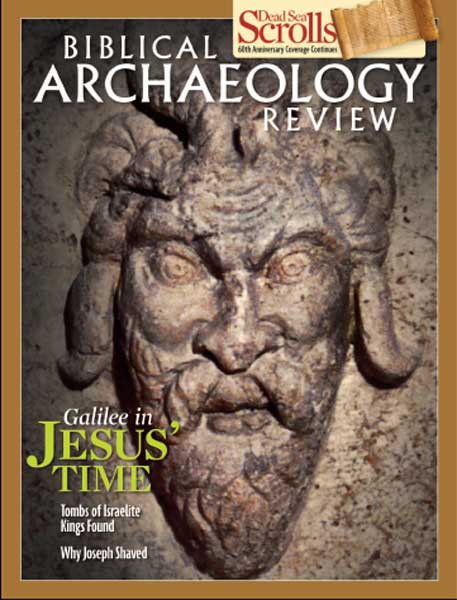Biblical Archaeology Review, July/August 2007

Features
In this issue, we offer Part 2 of our coverage of the 60th anniversary of the scrolls’ discovery. We begin with a question—Who wrote the scrolls?—and then take a look at the prevailing theories about who owned them, copied them and hid them in caves as Roman troops advanced across the Judean Desert in 68 C.E.
Most scholars believe the Dead Sea Scrolls (more than 900 of them) were either written or collected by a sect of Jews called Essenes, who are described by the Jewish historian Flavius Josephus and the Alexandrian Jewish philosopher Philo. However, the scrolls themselves make no explicit reference to the Essenes. Scholars infer the connection […]
The Quote Heard ’Round the World It was 1948—I was studying theology and the Bible in Louvain (Belgium) at a college run by French-speaking Jesuits—when I first read in the press about a sensational Hebrew manuscript discovery dating to the end of the pre-Christian era. In those days one had to take everything about […]
The Temple Scroll is the longest Dead Sea Scroll (over 28 feet, preserved almost to its entire length) and one of the most important. It was excavated by Bedouin in Cave 11 in 1956 (since then no more scrolls have been discovered at Qumran).
This is the story of an excavation in Massachusetts—actually in Cambridge—more specifically, in the basement of the Harvard Semitic Museum. I was trying to understand the buildings in an ancient capital of Israel. I ended up finding what may be the tombs of the kings. According to the Biblical narrative, the United Kingdom of […]
Everyone knows the Biblical story of Joseph (Genesis 37, 39–50). As a young lad he has dreams that predict his dominance over his brothers and parents. In retaliation, his brothers discuss killing him but instead sell him to traders who bring him down to Egypt, where he becomes servant to Potiphar, an officer of […]
The pendulum is beginning to swing back again. Before 20th-century archaeologists began uncovering it, Jesus’ Galilee was generally considered rural Jewish terrain. Then archaeologists made some astounding finds. Excavations at Sepphoris, less than 4 miles from Jesus’ hometown of Nazareth, revealed inscriptions in Greek, Roman architecture and some breathtaking Greco-Roman art, including the […]
On January 16–18, 2007, the Biblical Archaeology Society sponsored a private conference in Jerusalem to discuss many of the ancient inscriptions that have recently been alleged to be forgeries. The participants included many of the world’s leading epigraphers and material scientists. Hershel Shanks’s fascinating report on this conference is now available electronically info at no charge.
